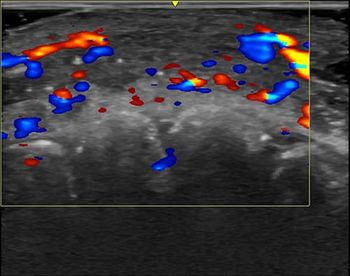
CT Suggests Smoking and Diabetes Linked to Hippocampal Calcifications
Researchers say smoking and diabetes likely have link to brain calcifications.
Computed tomography imaging suggests an increased risk of hippocampal calcifications among people who are older, have diabetes mellitus, or who smoke, according to a study published in the journal Radiology.
Researchers from the Netherlands performed a retrospective cross-sectional study to identify risk factors for hippocampal calcifications and to investigate the association between these calcifications and cognitive function. A total of 1,991 patients (mean age 78 years) participated in the study.
All patients underwent cognitive screening in addition to standard diagnostic work-up and brain CT. “A multiplanar CT scan makes it possible to see the hippocampus in different anatomical planes; for example, from top to bottom, right to left and front to back,” lead author, Esther J.M. de Brouwer, MD, a geriatrician at the University Medical Center in Utrecht, said in a release. “Before multiplanar CT scans, hippocampal calcifications were often mistaken for choroid plexus calcifications. So with multiplanar CT scans, hippocampal calcifications are better distinguished from calcifications in other areas.”
The results showed that most 829 of the 1,991 patients (41.6 percent) had Alzheimer’s disease, 490 (23.6 percent) had mild cognitive impairment, and 332 (16.7 percent) had subjective cognitive impairment. A total of 380 of the 1,991 patients had hippocampal calcifications. Older age, diabetes mellitus, and smoking were associated with their presence, although no association was found between the presence and the severity of hippocampal calcifications and cognitive function.
“We do think that smoking and diabetes are risk factors,” de Brouwer said in the release. “In a recent histopathology study, hippocampal calcifications were found to be a manifestation of vascular disease. It is well known that smoking and diabetes are risk factors for cardiovascular disease. It is, therefore, likely that smoking and diabetes are risk factors for hippocampal calcifications.”
The researchers plan more studies to further examine the possible links.
Newsletter
Stay at the forefront of radiology with the Diagnostic Imaging newsletter, delivering the latest news, clinical insights, and imaging advancements for today’s radiologists.




























